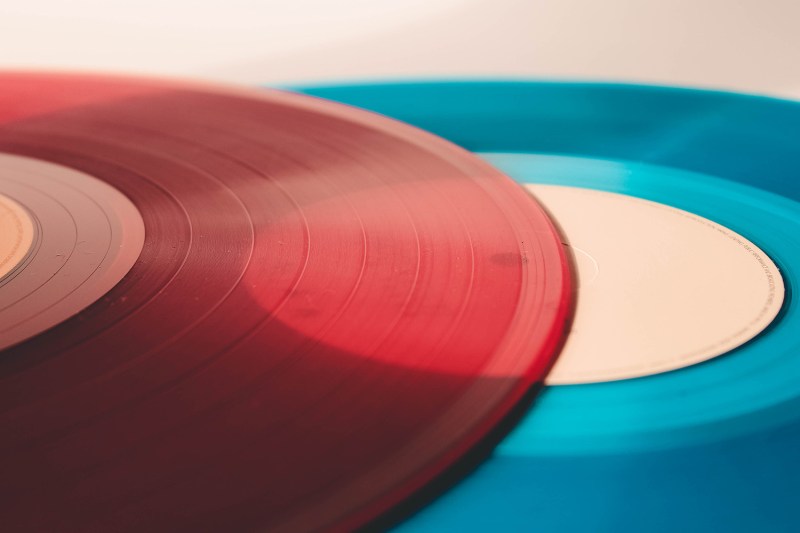
Of all the many genres in music, indie may be the most crowded. What began as an anti-establishment movement by bands in the 1970s and ’80s snowballed into a massive sonic category by the 2000s.
What does the genre even mean anymore? It’s tough to define, but as the name suggests, there’s an independent spirit at play. Indie music tends to be less FM dial and more college radio, falling somewhere between garage rock and pop. It’s undeniably approachable but maintains a certain streak of defiance, something that biggest labels often pass on as it might not be safe enough for the top of the charts.
Related Reading
Settling on even the best 15 indie rock records proved quite the task. The list could easily be hundreds of albums long, and probably should be. We tried to filter things, just to shorten the long list of worthy candidates (Postal Service is more electro than indie, St. Vincent is more art-pop, Whitney is great but perhaps to new of an act to be on the list, etc.). Here they are:
Apologies to the Queen Mary by Wolf Parade
There’s not a dull track on this near-perfect debut from Montreal quartet Wolf Parade. The backstory is as fantastic as the jittery rock, allegedly involving an incident with the band, an ocean liner named the Queen Mary, and a violent seance.
Transatlantacism by Death Cab For Cutie
This record sums up every appealing indie rock trait, from clever lyrics and catchy choruses to moody interludes and epic slow-builds that give you the butterflies. Like a single organism, the album progresses as one, with plenty of acts and scene and mood changes along the way.
The Lonesome Crowded West by Modest Mouse
Isaac Brock and company remind listeners that indie-rock should have some edge to it with the band’s outstanding sophomore record from 1997. Tracks seven through nine—“Cowboy Dan” to “Trailer Trash” to “Out of Gas”—form one of the best three-song sequences in the entirety of the genre.
Ga Ga Ga Ga Ga by Spoon
Spoon’s catalog is rich with fine indie-rock content but this 2007 album from the esteemed Austin band takes the cake. It spotlights the fiery, rock ‘n’ roll side of the genre with crystal clear production.
Bon Iver by Bon Iver
Typically, Justin Vernon operates under a sonic landscape better described as indie-folk or even cerebral pop, but the Bon Iver frontman’s self-titled album is more indie-rock than anything else, it could be safely argued. Atmospheric and freewheeling, this album is built for a reflective road trip.
Everything All the Time by Band of Horses
Band of Horses’ first album is a doozie, injecting indie-rock with a little twang and some truly anthemic singles like “Funeral.” College radio-friendly while offering flickers of Americana, it’s a feel-good album from start to finish.
Let It Die by Feist
Long before Feist became the chamber-pop star she is today, the musician pretty much went solo. She looped her vocals and guitar riffs, creating hauntingly good and beautifully lush indie-rock. This 2004 record is inventive and playful, with nods to jazz and plenty of nuance.
Funeral by Arcade Fire
Arcade Fire’s high-energy first release almost set the bar too high. Many of the tracks we associate with the genre, like “Wake Up” and “Neighborhood #2 (Laika),” are on this delicious 2004 album. It demonstrates the band’s uncanny ability to weave sheer might with grace and finesse.
Every Day and Every Night by Bright Eyes
Many touted Bright Eyes’ frontman Conor Oberst as the Dylan of the indie generation and for good reason. The musician is a lyrical genius, backed by a gifted, folk-tinged band. The act’s first EP released in 1999 is a mere five songs but teased the potential of this brainy indie-rock band, which blends emo and rock masterfully.
Dear Science by TV on the Radio
Releasing something on par with Return to Cookie Mountain is a tough task but iconic New York City act TV on the Radio surpassed it with this 2008 classic. Dear Science flexes the percussive, groove-kissed side of indie-rock, with an intoxicating effect that’s downright irresistible.
Teen Dream by Beach House
A record so catchy and distinctive it practically spawned its own sub-genre, Teen Dream is always worth a listen. Released in 2010, it cemented the Baltimore duo as the leading purveyors of bubbling, fluid, melodic, guitar-driven shoegaze that coats the listener from head to toe.
Yankee Hotel Foxtrot by Wilco
Jeff Tweedy and indie go hand in glove. The Wilco frontman delivered a masterpiece with this record, which wrapped in 2001 but was refused by the band’s original label. So, Wilco and Warner Brothers parted ways and the album flourished. It doesn’t get much more indie than that.
Love and Distance by Helio Sequence
A lesser-known act worthy of much more acclaim, Helio Sequence is the band that never quite exploded like many thought it would. The duo crafts intricate indie rock that counters electronica and heavier, percussive qualities with shimmering folk. While the entire discography is worth a spin, this 2004 record is the highwater mark.
Chutes Too Narrow by The Shins
Immortalized by Natalie Portman and Garden State in 2004, The Shins was well on its way to indie stardom already. A year prior, the New Mexico act released this album, which is decidedly bigger and bolder than prior releases. Not many in the indie game can make you feel all the feels quite like James Mercer and crew.
You Forgot It in People by Broken Social Scene
The product of a Canadian supergroup, this album is layered and full of surprises. Not many bands can move as swiftly from smooth jams to more obscure alt-rock. It’s packed to the gills with smart arrangements, unexpected structures, and soaring riffs — the work of a large, very dialed-in band.


